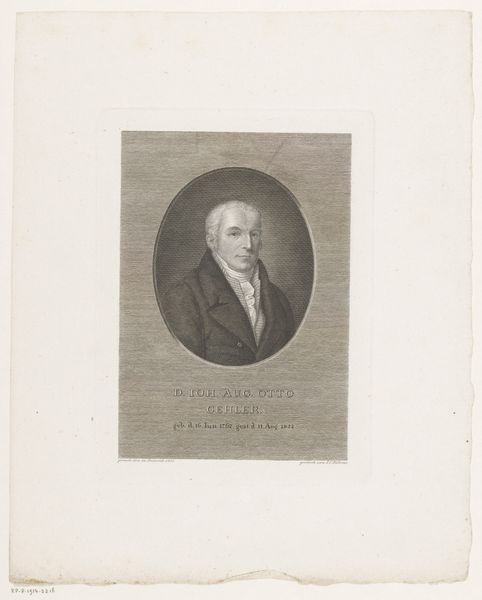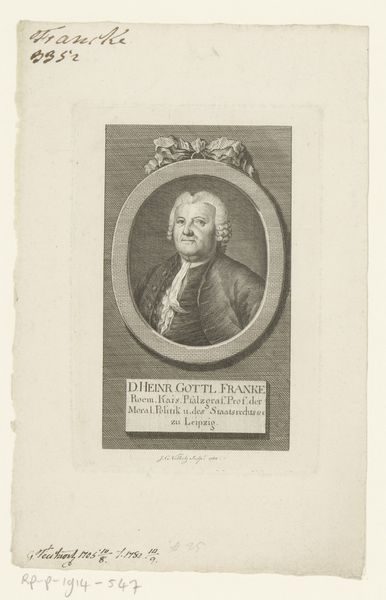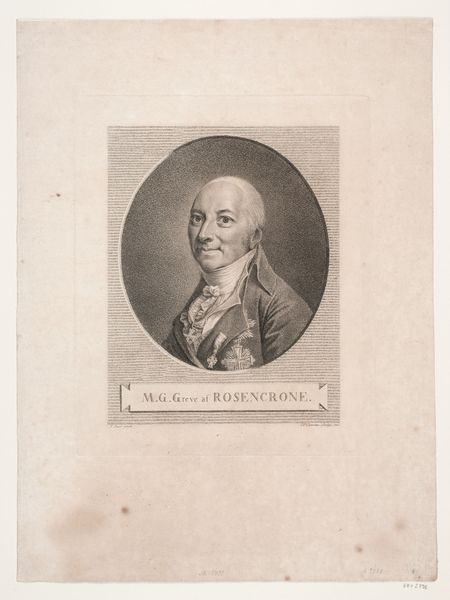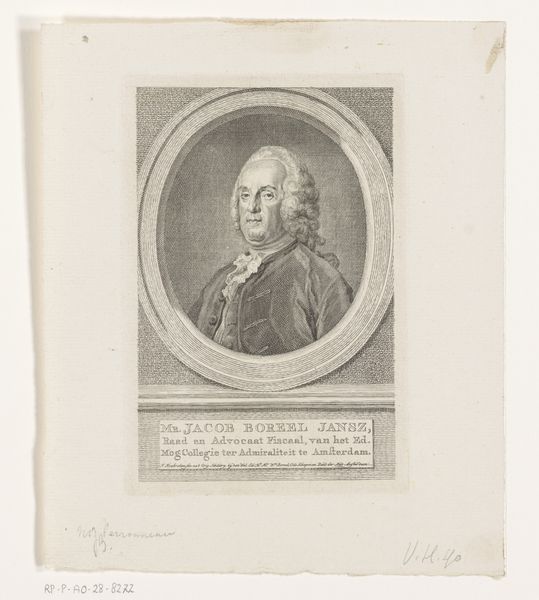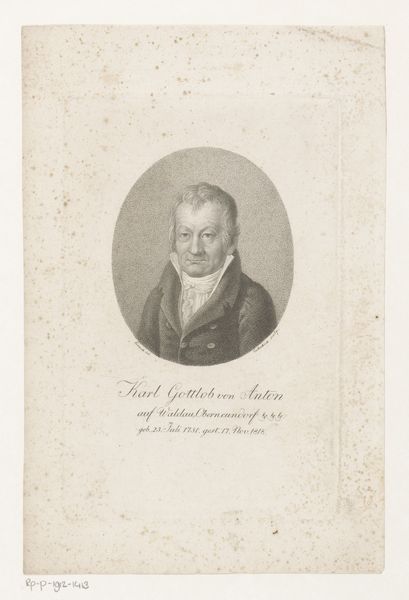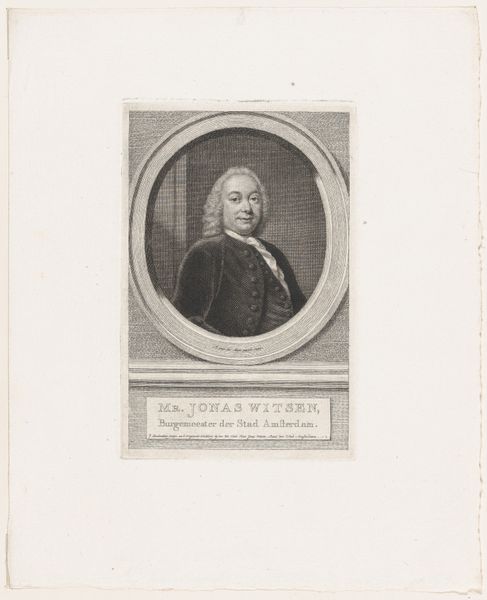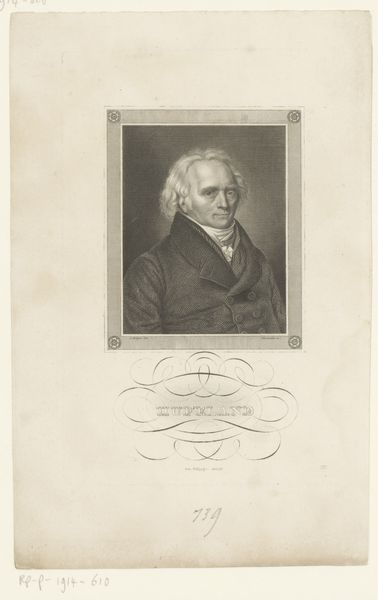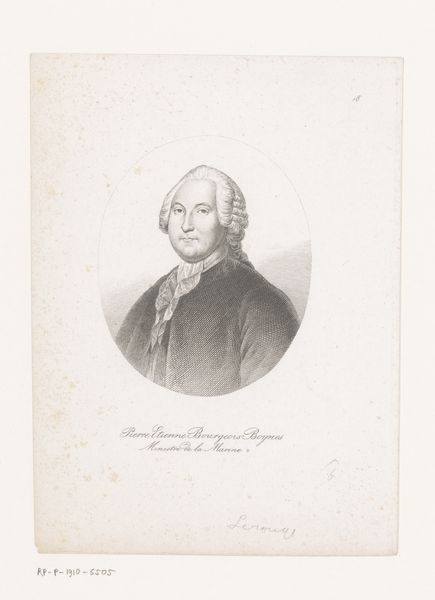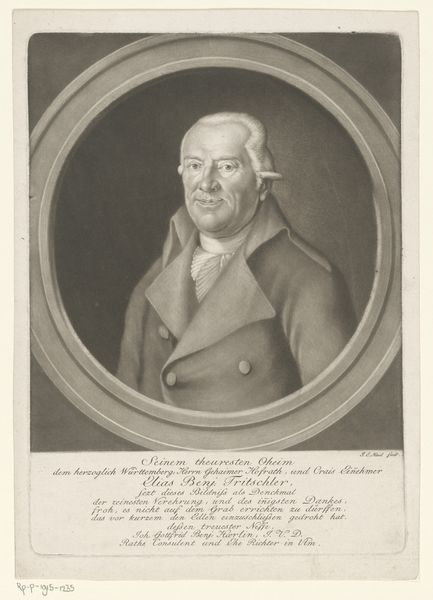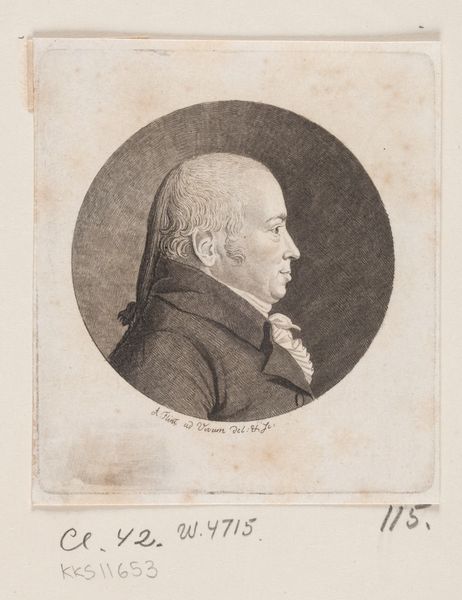
print, engraving
#
portrait
#
neoclacissism
# print
#
old engraving style
#
19th century
#
academic-art
#
engraving
Dimensions: height 293 mm, width 237 mm
Copyright: Rijks Museum: Open Domain
Curator: Editor: So, this is Maurice Blot's 1809 print, "Portret van Jean-Nicolas Corvisart". It is an engraving and... well, it looks like your typical 19th-century portrait, quite formal. What can you tell me about it? Curator: It's tempting to simply read this as a representation, but what if we consider the material conditions of its production? Think about the labor involved in creating this engraving. What does the medium itself – a print – tell us? Editor: Ah, right! Well, being a print means it could be reproduced. Was this meant for mass consumption then? To spread an image of Corvisart? Who was he, and why him? Curator: Exactly. Jean-Nicolas Corvisart was a prominent physician, a figure of authority. Consider how the print medium, while capable of dissemination, was also closely tied to social hierarchies and power. Was it truly 'mass' consumption, or a controlled distribution within certain circles? Look at the precision and skill demanded by engraving – it elevates the subject, yet the act of printing democratizes it to a degree. An interesting tension. Editor: So it is both exclusive and accessible. That’s quite clever. I hadn't considered the material properties themselves could be so...meaningful, or at least indicative of its intended audience. It changes my understanding a lot. Curator: Precisely! The material realities shape not only the production but also the reception. Don't just look at what it depicts, consider how and why it was made. That's where the real story lies.
Comments
No comments
Be the first to comment and join the conversation on the ultimate creative platform.
